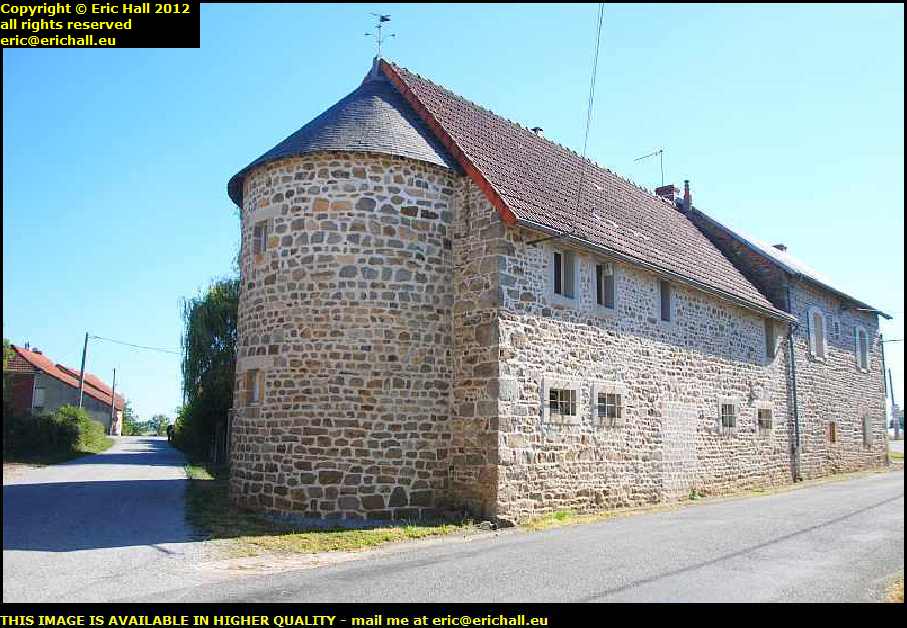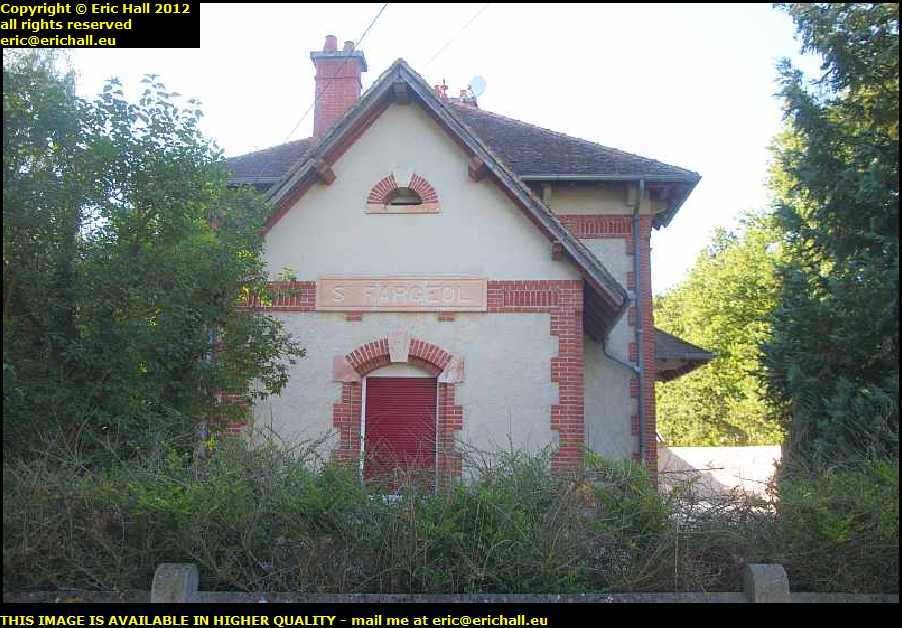… liked the photos of the wall as it stands right now – the ones that I went back and posted for yesterday.
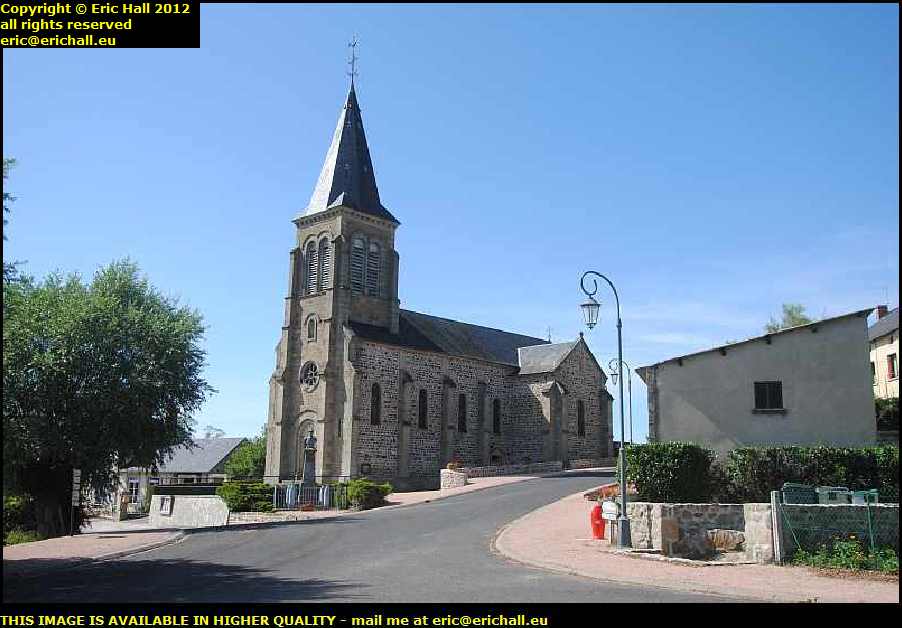 Anyway, here’s another photo for today, especially for Marianne in Brussels who has passed comment to the effect that I seem to spend most of my time in rural France photographing churches.
Anyway, here’s another photo for today, especially for Marianne in Brussels who has passed comment to the effect that I seem to spend most of my time in rural France photographing churches.
This one is the church of La Cellette, for La Cellette is the destination of this week’s Wednesday walk around the communes of the Canton of Pionsat with our friend Marianne.
And didn’t we have a nice day for it too?
 This is actually the third church to have been built in La Cellette and dates from 1883.
This is actually the third church to have been built in La Cellette and dates from 1883.
The previous one was far too small apparently, and because of its constrained situation and site, (and on our travels around, we’ve seen quite a few churches in the Auvergne that have been in constrained situations and sites) it was not possible to enlarge or alter it.
Consequently it was demolished.
 The claim to fame of the village lies actually a kilometre or so outside, down a dirt track.
The claim to fame of the village lies actually a kilometre or so outside, down a dirt track.
And this is the viaduct of the Paris-Orleans railway on its branch Montlucon-Pionsat-Gouttières.
I’ve talked … "at great length" – ed … about this railway line in the past – how it was designated as “a line of national importance” long before the turn of the 20th Century.
But it was dogged by delay after delay, construction held up by World War I, and when it was finally, after many vicissitudes, opened in 1932 its utility had passed with the collapse of the coal-mining projects in the Gouttieres region.
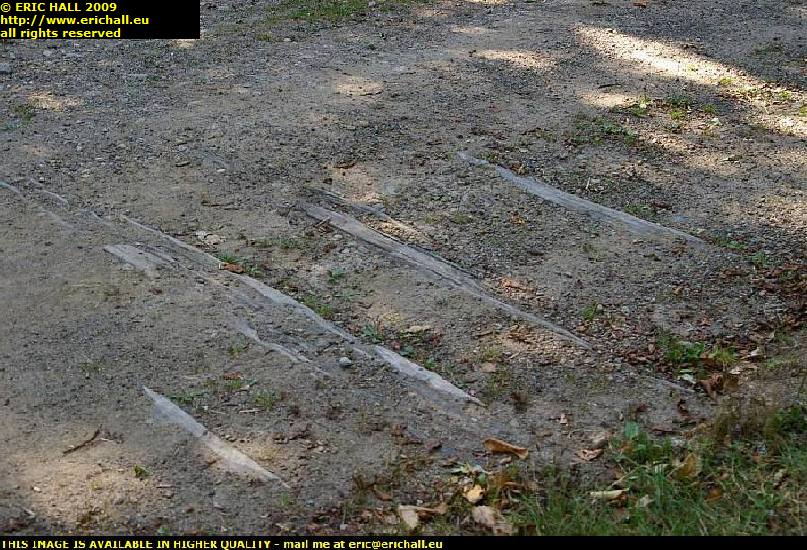 It was closed “as a war economy measure” in 1939 after just 7 years of operation and the section south of Pionsat was never reopened.
It was closed “as a war economy measure” in 1939 after just 7 years of operation and the section south of Pionsat was never reopened.
There are still a few traces of the former track if you hunt around long enough to find them though.
At what was once a level crossing for a country lane, there are still the railway sleepers embedded on the roadway. This actually is a good indication of how much maintenance has been undertaken on the lane since the closure of the line.
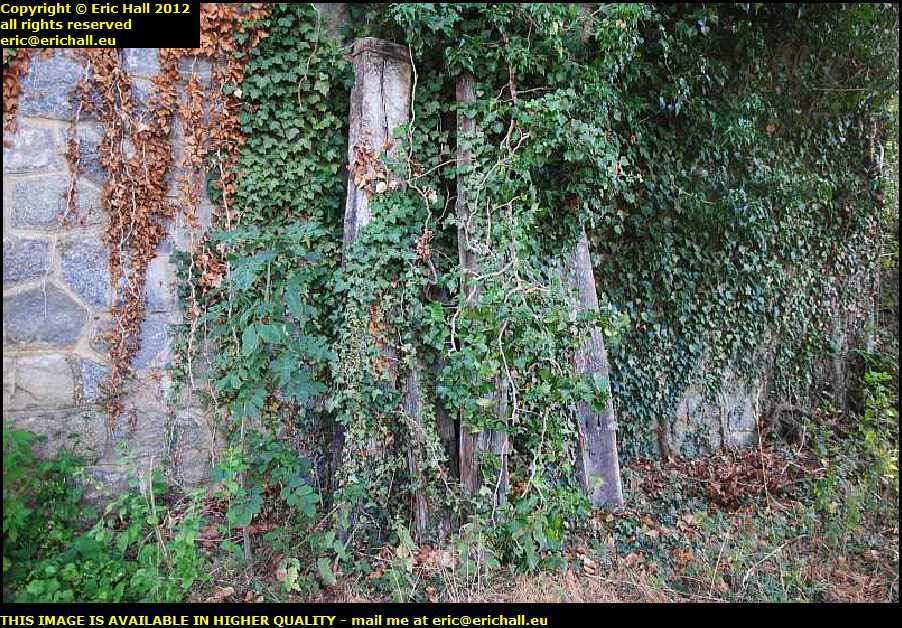 While you admire yet more railway sleepers, propped up against the viaduct where they have stood for probably 50 years or more ,let me tell you about the biggest irony of all.
While you admire yet more railway sleepers, propped up against the viaduct where they have stood for probably 50 years or more ,let me tell you about the biggest irony of all.
And that is the fact that that the Paris-Orleans Railway Company, which built the railway line, was GIVEN the land free of charge by the commune, but under certain conditions.
The stipulation was that the railway company had to build a railway station for the village – it had been dithering about whether it would or not and the gift of the land was meant to sway the decision.
And so the railway company took the land, built the line – and then dropped all plans for the station, which was never built.
 But the viaduct still remains, and it’s well-worth the effort to clamber up to the top because the view to the north is stunning
But the viaduct still remains, and it’s well-worth the effort to clamber up to the top because the view to the north is stunning
In the foreground we have the village of La Cellette and poking out above the trees to the right of centre is the spire of the church that we have just visited.
Away in centre-left is the spire of the church of the town of Pionsat, and disappearing into ths simmering heat-haze are the rolling hills that lead on up to Marcillat-en-Combraille
There were only a few of us today, which was a pity, but we had a lovely time wandering around the countryside, and then we all repaired to the village café – one of the only two village cafés still surviving in the whole of the Pionsat canton – for a nice cold drink.
And this is where the excitement begins.
A woman who lives in an old house in the village is in charge of the church and we went to thank her for opening it for us. I know her husband – he’s something to do with the FC Pionsat St Hilaire football club – and so we all ended up having quite a lengthy chat.
Now I mentioned earlier that the present church is the third, and I told you a little about the second. And so what about the first one?
We know that it existed because it’s mentioned in a Papal Bull of 1118, being described as a tiny chapel. While its location is the subject of … errr … much debate, one particular theory has been adopted by those who might know a thing or two about it.
Accordingly, Marianne has been trying to visit the cellar of this particular house for half a century.
Anyway, to cut a long story short … "hooray" – ed … the owner of this house, by now in an expansive mood, gave us a guided tour of the cellar on condition that we don’t photograph it and we don’t describe its location.
So there we were – perfect primitive vaulted ceiling, pre-medieval beaten earth floor, a bricked-up external door that wasn’t much more than 5 feet tall.
Marianne was in heaven of course, and I was well-impressed. We had probably at least 1200 years at least underneath our feet.
It really was the climax of an excellent day.

